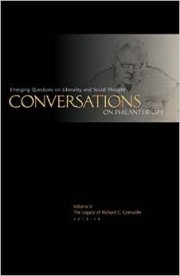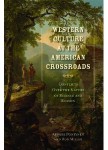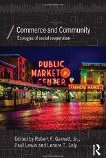Comment on Turner I
Frederick Turner’s extraordinary essay sets the stage for an assessment of charitable gifts. Turner offers various models and forms of charitable activity that draw from science, history, and economics. On the whole, this is a truly impressive achievement. While I am generally sympathetic to his arguments, there are specific areas in which I part company. Most notably, I am not persuaded that the economic free market applied to culture leads to a salutary result. Culture—circa 2005—has been degraded by a free market unconstrained by virtue. The storytellers and thinkers Turner makes reference to have been seduced by commercial and “democratic” impulses. As a consequence, the tales of cultural revival so necessary in our age do not exist and, at the moment, are not likely to be funded by the foundation world or charitable gifts.
Let me start with Professor Turner’s reference to free and coercive economics. A democratic, free-market system elicits competing wills of free individuals, thus allowing civil society to flourish—or so it is argued by Turner. Yet it would appear that the free market applied to culture often has the opposite effect.
Alas, a cultural free market seems to operate under a Gresham’s Law, with the bad driving the good out of circulation. Television fare, for example, is designed for the lowest common denominator. Instead of being uplifting, it attempts to reflect what is coarse and degrading—all, I should hasten to note, in the interest of “democratization.”
While Turner recognizes “the abandonment of civility, etiquette, and the ideals of ladylike and gentlemanly behavior,” he contends that the “new frankness” engendered by the counterculture led to political correctness which limits political freedom and creates distortions in the economic market. But what might be said is that political correctness is selectively coercive. It is true that a person may not criticize certain designated “protected” groups, such as blacks, Muslims, Hispanics, Africans, etc., but attacks on Catholics, evangelicals, orthodox Jews, and other such persons remain outside the coercive orbit.
Similarly, Turner suggests that it is the responsibility of artists, storytellers, and wise thinkers to enlighten the society by dispersing the dark clouds that hover above the culture. Yet Turner seems to ignore the obvious fact that Norman Mailer, Paul Goodman, Charles Reich, Susan Sontag, Herbert Marcuse, Norman Brown, Jean Luc Godard, and Abraham Maslow, among countless others—artists, thinkers, and storytellers—were greatly responsible for creating the countercultural conditions he openly deplores. Yes, it may be the responsibility of storytellers and thinkers to restore civility, but the powerful existentialists who remain in their midst refuse to accept the organic ties to the past which are woven into civilization.
Turner notes that the unrestrained act of giving is a desirable model for human behavior. Surely there is much to be said for it. But the freedom he points to, while “self-organizing,” often has a baneful social influence. It is instructive, for example, that David Packard started a foundation devoted to population control, notwithstanding the fact that 44 percent of the world’s population is not in a replacement mode and by the year 2050 the global population may be in decline. Having the freedom to give also translates into the freedom to make bad selections, even harmful ones.
The benefactions of the Ford Foundation in the 1960s to promote decentralized schools actually increased racial tensions between white teachers and black community organizers in the Oceanhill-Brownsville section of Brooklyn. Clearly, reasonable postulates can have devastating practical effects.
Turner reveals that he is somewhat sensitive to this issue when he makes reference to “productive giving.” However, he overlooks the contemporary charitable temptation to give for narrowly specified results. The “Morningstar rating system” he calls for already exists. As I see it, a more productive type of foundational giving—open-ended contributions to talented individuals or promising institutions—is far too rare.
Surely Turner’s soaring imagination allows him to entertain the remarkable ways in which philanthropy can be married to heroic narratives and poetic adventure. The key to these narratives, however, is verisimilitude and truth-seeking notions. When Turner uses the film Erin Brockovich as an example of art that brings to life the work of environmental crusaders, he is using a phony story that masquerades as truth. Alas, that brings us to the caveat required when asking marginal storytellers to develop the narrative for a cultural resurrection. Erin Brockovich was not a crusader for environmental safety, but instead a self-seeking opportunist who exploited an issue for personal aggrandizement.
In what sensible way can lies inspire? Once the false frame is excoriated, the bare truth lies starkly as a reminder of the original deception. It is far better to set the record straight from the outset. If only there were a sufficiently large number of storytellers and thinkers who could engage the populace with ideas that uphold and reinforce rational judgment!
Maimonides understood that the highest form of giving is a partnership, “a helping hand” in which the expectation exists that the giver wants a relationship with the receiver and there are mutual expectations. The giver offers all that he can, and the receiver is expected to imbibe lessons that will make him a better (read: independent) person.
Turner asks, quite appropriately, “How might the hated feeling of shame be given its proper place as the defense of honor and the portal to the sweet paradise of humility?” This is surely a challenge for the contemporary artist, who as it happens, has not found an answer. Book titles such as Making Itand Advertisements for Myself suggest a cultural quest of self-absorption. In fact, shame has already been interred, along with humility. The difference between fame and infamy is indistinguishable in a society where being a celebrity is what really counts.
How I long for the emergence of more poets like Frederick Turner! How I wish that our contemporary philanthropists were inspired by grand dreams of civic renewal! Perhaps my thoughts are too bleak. There surely are positive examples that can inspire. And yet, by any measure, they are too few. The good, the true, and the beautiful are consigned to a tiny chamber behind a hidden door with a sign that says Do Not Enter. For the typical cultural consumer, the klieg lights are on the meretricious, the sciolistic, and the degrading.
Philanthropy should recognize the challenge frontally before it hails the poetry. Our age produces technical wonders, not poetic visions. I yearn for the moment Turner describes when “The wasteland will become a flowering garden/Where the King Fisher’s ancient wound will heal.” I wait and I wait.




